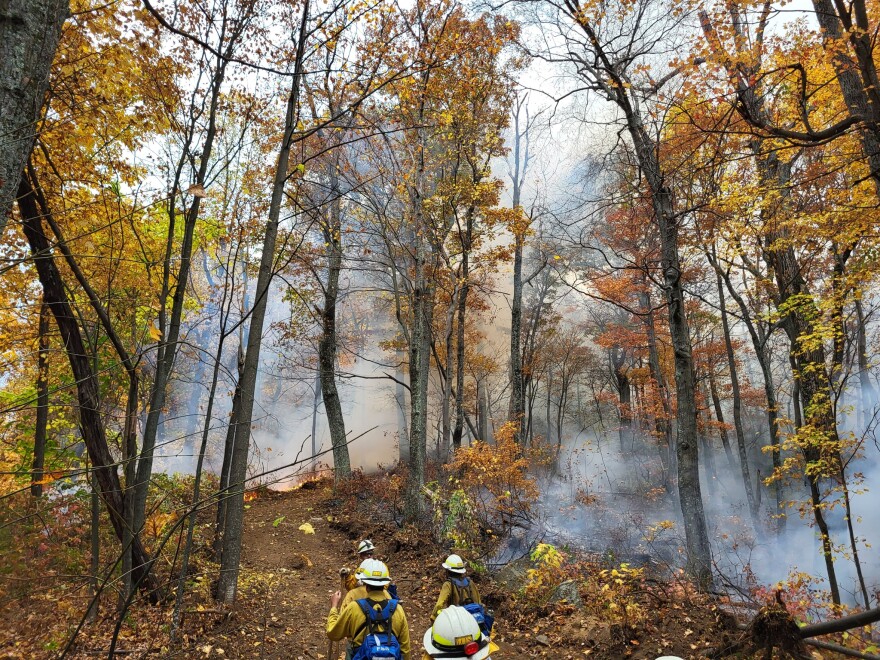Two helicopters flown by pilots from the National Park Service are dropping water along a mountain top between Madison and Luray, hoping to slow the fire that began October 24th in the Rapidan Wildlife Maznagement Area, just outside the park.
At the Virginia Department of Forestry, spokesman Cory Swift says investigators will try to figure out how it started once the fire is out.
“The number one cause of wildfires in Virginia is escaped debris burning, so that’s certainly a possibility. We also see that some wildfires in Virginia are caused by downed power lines or lightning strikes."
Whatever started the blaze, crews are using bulldozers where possible to clear the forest floor of brush and create fire breaks.

“Containment strategy involves putting in paths where we’re scraping away all that organic matter down to the soil – to cut off fire from its fuel source,” Swift explains.
But, he says, this particular fire is a tough one.
“It’s on a mountain, the terrain here is very rocky, it’s steep, so we’ve had firefighters going in and putting in those fire lines by hand, so we’re not able to move quite as quickly.”
As many as a hundred people have mobilized to fight the flames, using controlled burns along well-established fire breaks – dropping so-called dragon eggs – hollow spheres filled with flammable chemicals.

“These drop from the drone and land on the ground, and after about forty seconds they ignite the fire to remove fuels ahead of the wildfire,” Swift says.
Still, the fire has managed to jump containment lines several times – nurtured by dry, windy days. Swift says conditions here aren’t great, but they’re not as bad as what western firefighters face. There, extreme drought and the presence of more conifers – trees with needles rather than leaves – can produce towering blazes.
“They tend to have these fires that can get into the upper stories of the forest and actually jump from tree top to tree top. We don’t see that in Virginia very often, because we have higher humidity on average, and there’s just more moisture in the foliage.”
In fact, Swift says, people enjoying a view of our mountains might never know they had burned.
“Standing here, from the incident command post, and looking up on Double Top Mountain you can’t actually tell that this was on fire a couple of days ago. A lot of the trees are still green. A lot of them still have their leaves on them. We’re not seeing that mature trees have had many casualties.”

And the Quaker Run Fire, named for a road near where it burns, poses little threat to wildlife. Bill Perry has been battling blazes for more than 20 years and had just come down from the mountain.
“The only thing I’ve seen were two turkeys and a toad, and they were moving quickly away," he says with a chuckle. "You know fire is not a new thing to the ecosystem here, so turtles, salamanders they’ll burrow into the ground and escape the heat. They have survival instincts.”
Smoke, however, is a problem for people who live close by and for those considering a visit to Old Rag or Whiteoak Canyon. Claire Comer speaks for the Shenandoah National Park.
“We have a smoke monitoring staff member with us now, and she’s doing daily updates and constantly traveling to see where the smoke is. It moves quickly, and that’s been our challenge in trying to warn hikes. I would ask hikers to avoid the central district completely.”
In fact, the Wilhite Wagon and Graves Mill trails are closed until further notice, and power at Big Meadows has been turned off as a precaution – but generators are supplying the visitors center there and the campground remains open.
This report, provided by Virginia Public Radio, was made possible with support from the Virginia Education Association.


